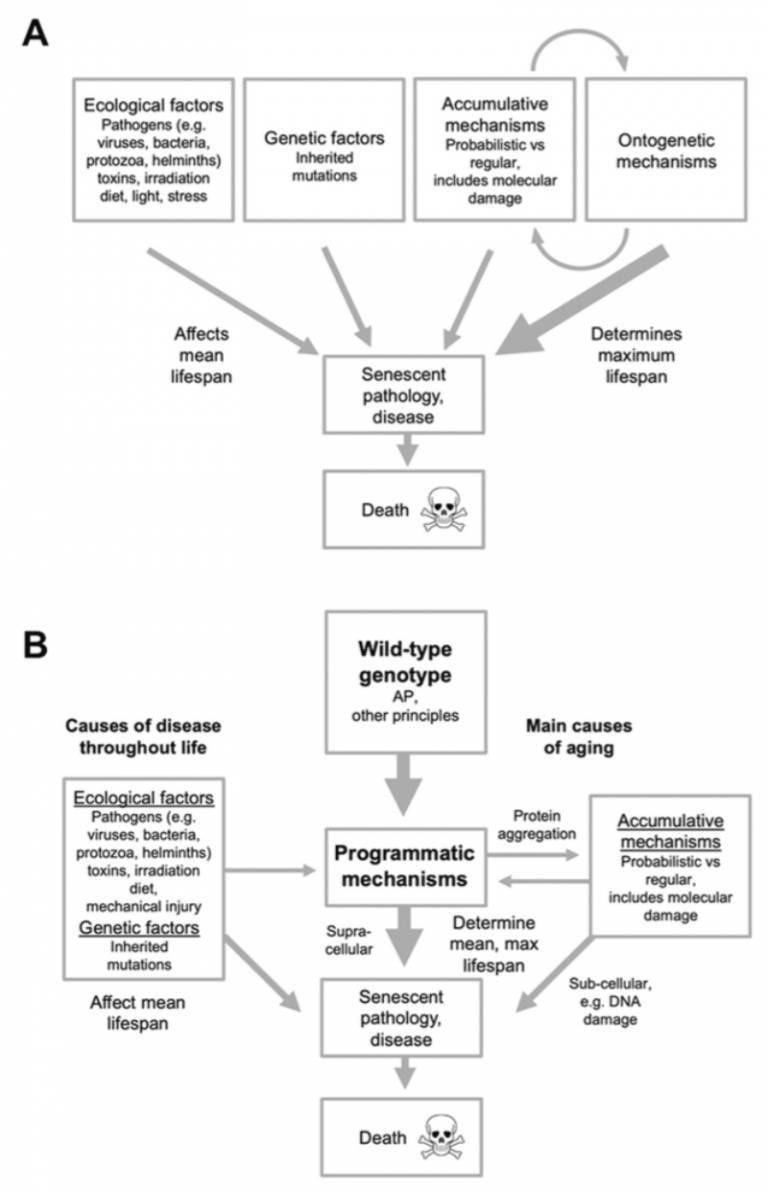The hyperfunction theory: An emerging paradigm for the biology of aging
17 January 2022
A new review by David Gems in Ageing Research Reviews.

The process of senescence (aging) is predominantly determined by the action of wild-type genes. For most or- ganisms, this does not reflect any adaptive function that senescence serves, but rather evolutionary effects of declining selection against genes with deleterious effects later in life. To understand aging requires an account of how evolutionary mechanisms give rise to pathogenic gene action and late-life disease, that integrates evolu- tionary (ultimate) and mechanistic (proximate) causes into a single explanation. A well-supported evolutionary explanation by G.C. Williams argues that senescence can evolve due to pleiotropic effects of alleles with antagonistic effects on fitness and late-life health (antagonistic pleiotropy, AP). What has remained unclear is how gene action gives rise to late-life disease pathophysiology. One ultimate-proximate account is T.B.L. Kirk- wood’s disposable soma theory. Based on the hypothesis that stochastic molecular damage causes senescence, this reasons that aging is coupled to reproductive fitness due to preferential investment of resources into reproduction, rather than somatic maintenance. An alternative and more recent ultimate-proximate theory ar- gues that aging is largely caused by programmatic, developmental-type mechanisms. Here ideas about AP and programmatic aging are reviewed, particularly those of M.V. Blagosklonny (the hyperfunction theory) and J.P. de Magalha ̃es (the developmental theory), and their capacity to make sense of diverse experimental findings is assessed.
https://doi.org/10.1016/j.arr.2021.101557
 Close
Close

